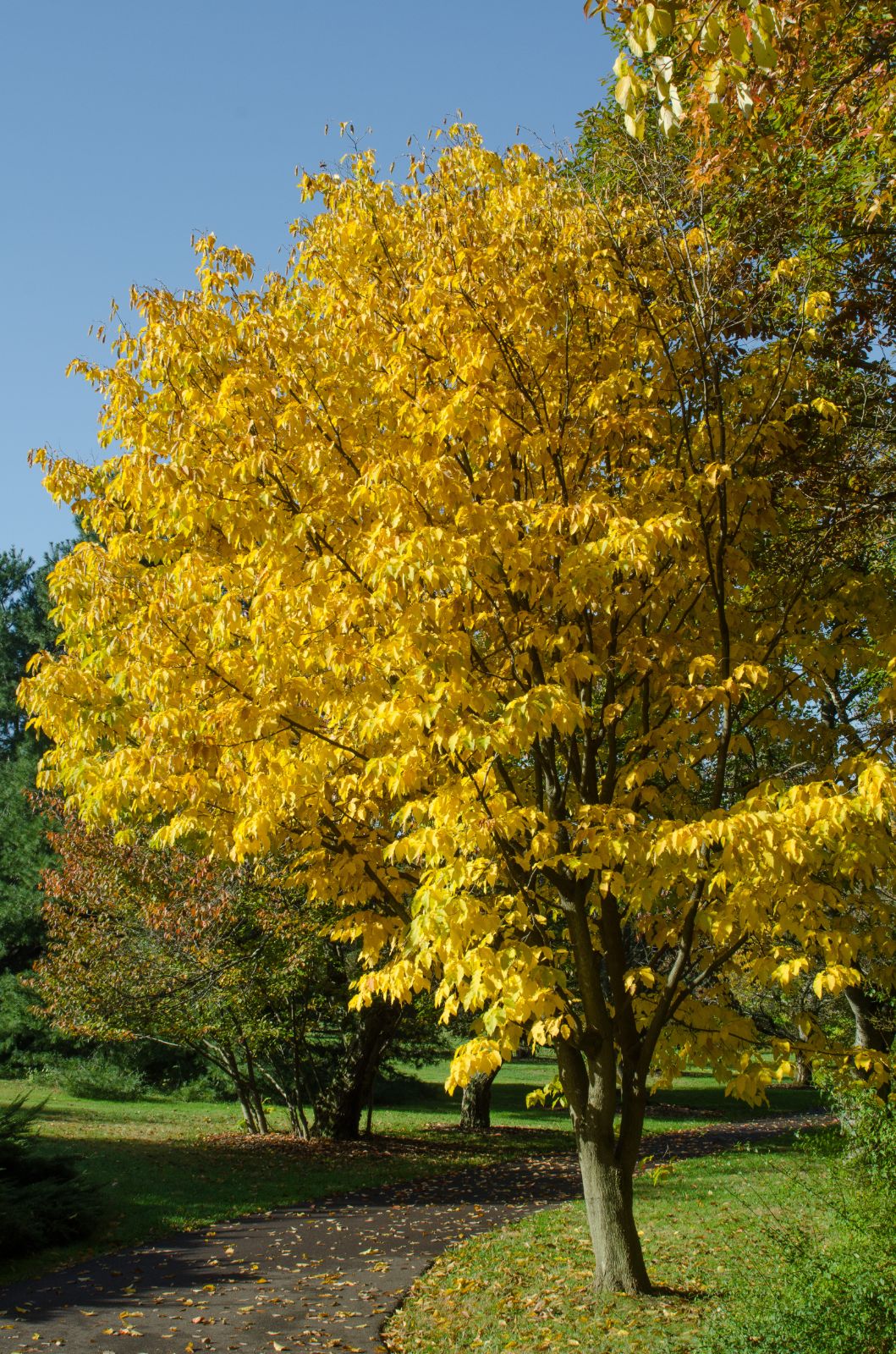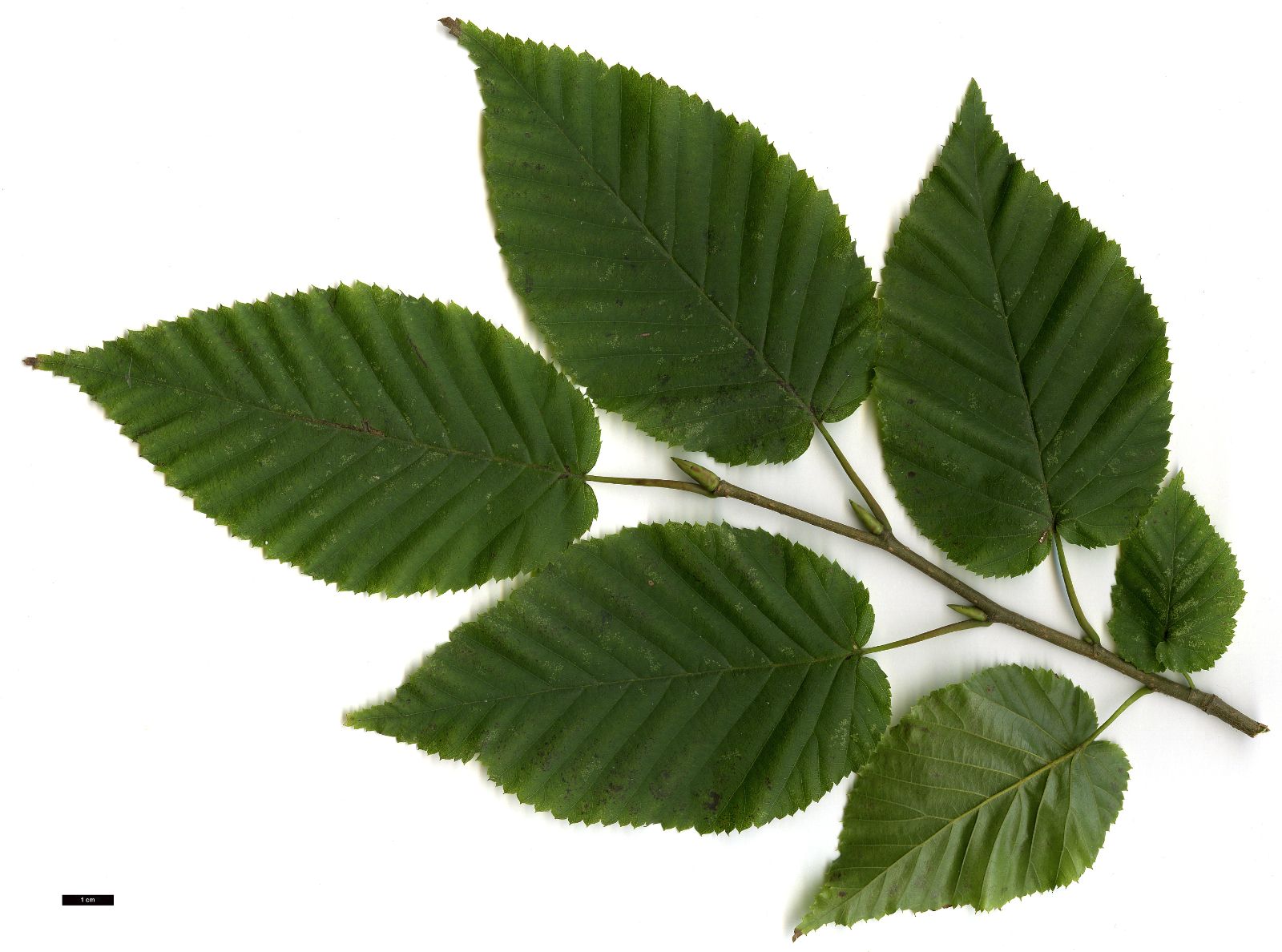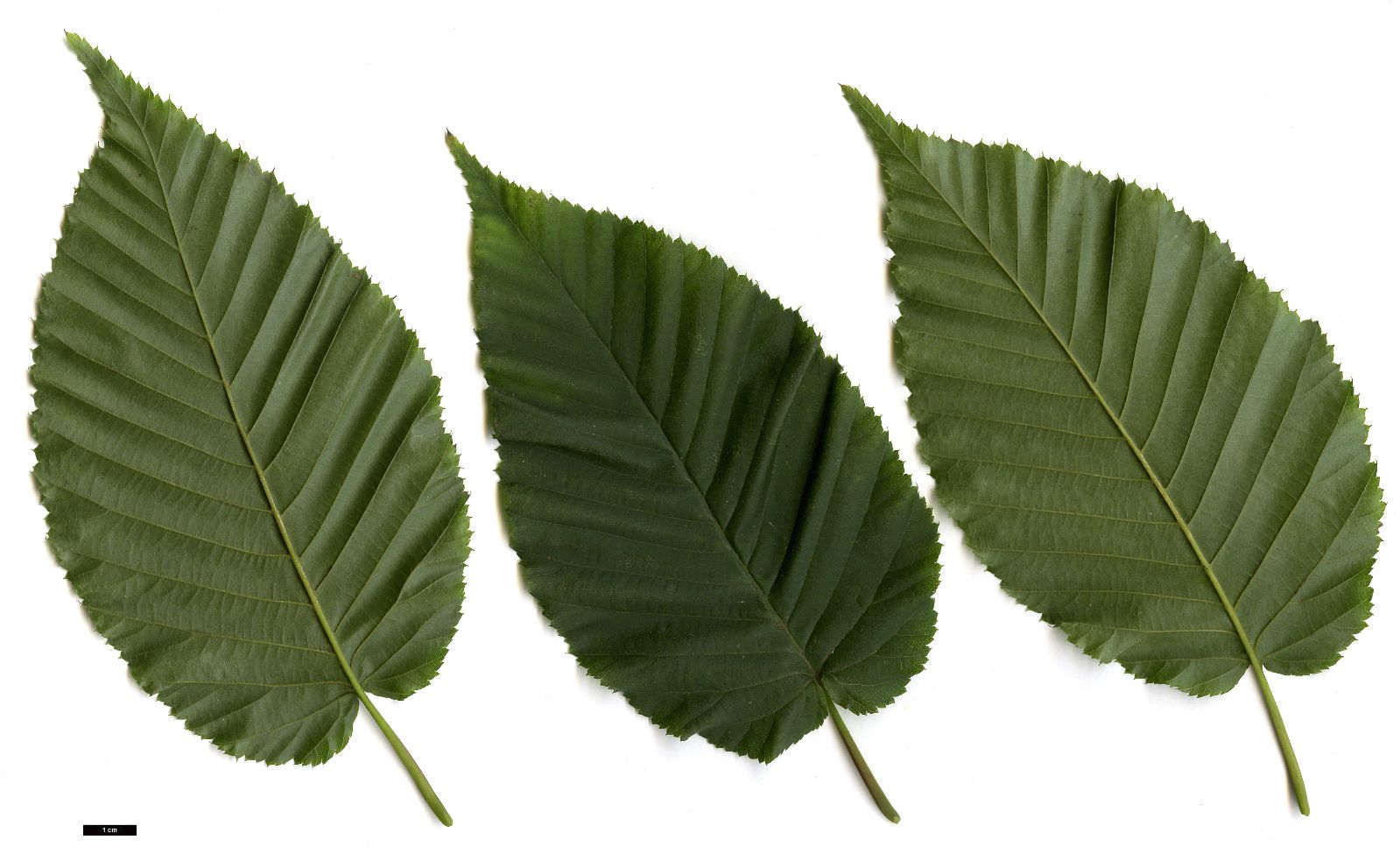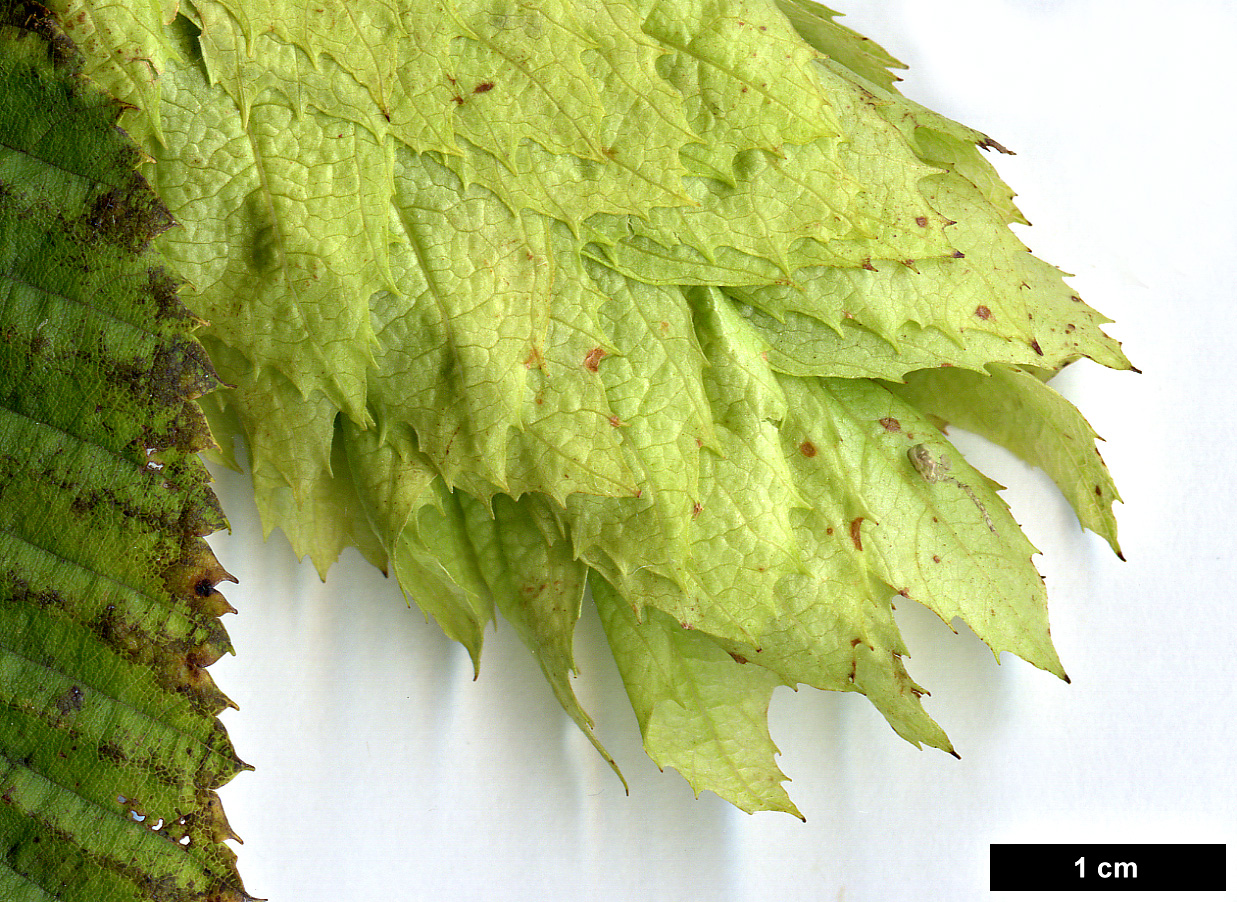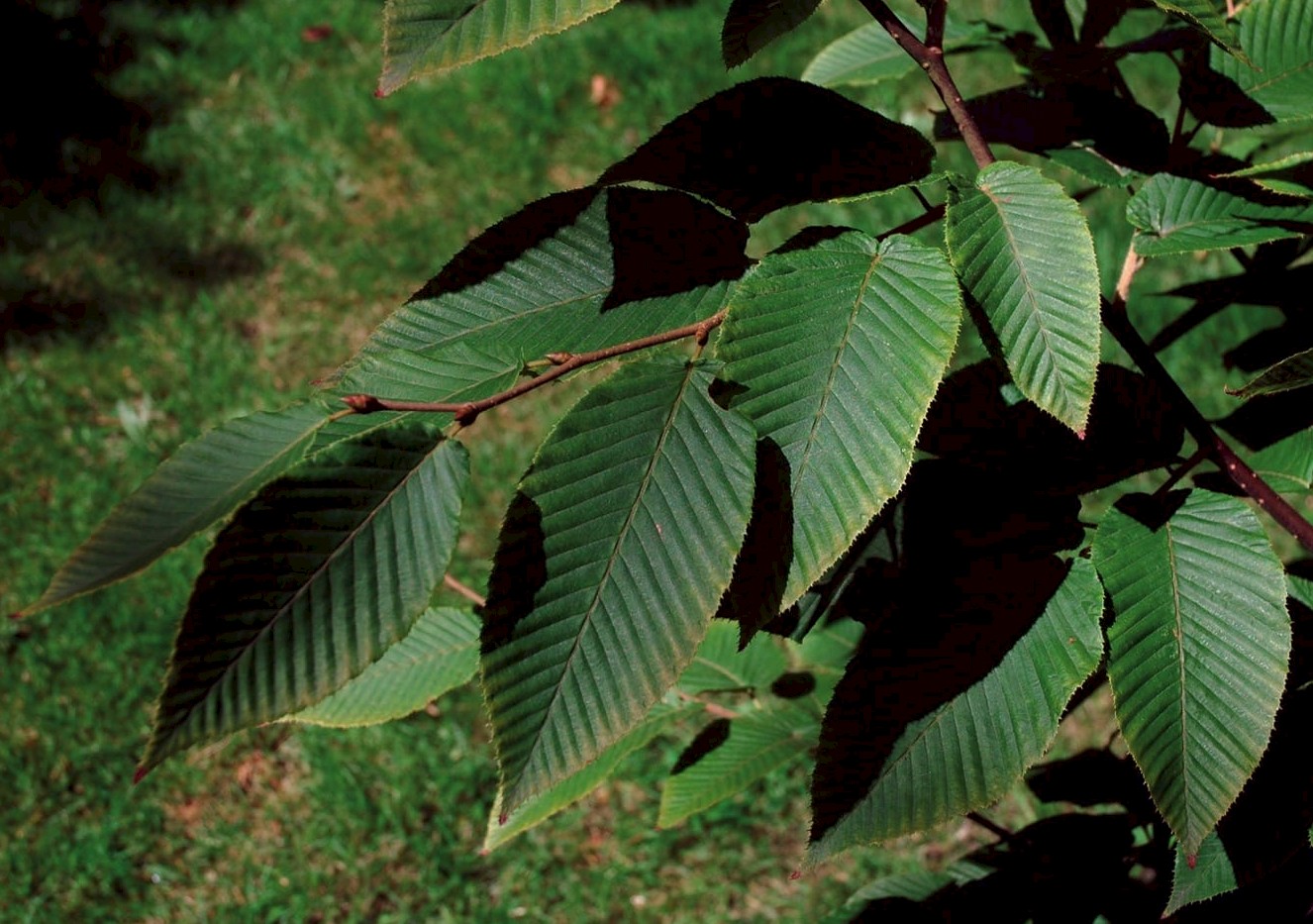Carpinus cordata
Sponsor
Kindly sponsored by
Lord and Lady Aldington
Credits
Owen Johnson (2022)
Recommended citation
Johnson, O. (2022), 'Carpinus cordata' from the website Trees and Shrubs Online (treesandshrubsonline.
Genus
Common Names
- Sawa Hornbeam
- Sawashiba
- Bigleaf Hornbeam
- Heartleaf Hornbeam
Synonyms
- Distegocarpus cordatus (Blume) A. DC.
- Ostrya mandshurica Budischtschew ex Trautvetter
- Carpinus erosa Blume
Infraspecifics
Other taxa in genus
- Carpinus betulus
- Carpinus caroliniana
- Carpinus faginea
- Carpinus fangiana
- Carpinus fargesiana
- Carpinus hebestroma
- Carpinus henryana
- Carpinus japonica
- Carpinus kawakamii
- Carpinus laxiflora
- Carpinus londoniana
- Carpinus mollicoma
- Carpinus monbeigiana
- Carpinus omeiensis
- Carpinus orientalis
- Carpinus polyneura
- Carpinus pubescens
- Carpinus rankanensis
- Carpinus × schuschaensis
- Carpinus shensiensis
- Carpinus tropicalis
- Carpinus tschonoskii
- Carpinus turczaninovii
- Carpinus viminea
Tree to 18 m (bushy in colder conditions). Bark dark grey, roughened or scaly. Twigs yellowish brown, variably pubescent; terminal bud large (c. 15 mm long). Leaves ovate to oblong, 8–15 × 4–5 cm; base unequally and often deeply cordate; apex short-acuminate; variably pubescent, sometimes densely so under the veins; lateral veins in 15–20 closely-parallel pairs, each vein ending in a mucronate tooth between which are 2–3 irregularly smaller mucronate teeth; petiole 1.2–2 cm, variably pubescent. Male catkins 2–5 cm, scales linear. Female catkin expanding to 5–12 cm in fruit; fruit-bracts ripening pale brown, densely overlapping, broadly ovate-oblong, 1.5–2.5 × 1–1.3 cm, margin remotely serrate and folded over the nutlet on one side, with an oblong lobe wrapping the nutlet on the other. (Bean 1976; Li & Skvortsov 1999; De Langhe 2022).
Distribution China Anhui, Gansu, Guizhou, Hebei, Hubei, Hunan, Jiangsu, Jiangxi, Liaoning, S Ningxia, Shaanxi, Shandong, Shanxi, Sichuan, Zhejiang Japan North Korea South Korea Russia Near the Chinese and North Korean borders
Habitat Mountain forests on moist soils.
USDA Hardiness Zone 4-5
RHS Hardiness Rating H6
Conservation status Least concern (LC)
This is one of the ‘false hornbeams’ of Section Distegocarpus, which are distinct in their rougher bark, long leaves with many closely-parallel lateral veins and striking, hoplike fruiting catkins. In Carpinus cordata the leaves (and buds) are particularly large, and the leaves are strongly heart-shaped at the base. The species was introduced from Japan to Veitch’s nursery in England by Charles Maries in 1879 (Bean 1976) but has never become at all common in Britain, growing slowly and usually remaining a bush (Tree Register 2022). It presumably needs longer, warmer summers to thrive, since it has reached nearly 11 m at the Bernheim Arboretum in Kentucky (Dirr 2009), and has made promisingly shapely young trees at the Morris Arboretum of the University of Pennsylvania (Morris Arboretum 2022).
Like most Carpinus it succeeds over limestone; there is an 8 m bush at Dyffryn Gardens in south Wales (Tree Register 2022). It is also one of the hardiest asiatic species; a plant from a Japanese collection has grown at the Linnaeus Gardens in Uppsala, Sweden since 2001 (Royal Botanic Garden Edinburgh 2022) and it has recently been trialled at Arboretum Mustila in southern Finland (Arboretum Mustila 2022). A minor demerit is that it shows little or no autumn colour, even in the continental climate of the Missouri Botanical Garden in the American Midwest (Missouri Botanical Garden 2022).
There have been several recent reintroductions: it is represented in the hornbeam collection at Kew by BECX 133 and 243 and SOKU 9; at the Sir Harold Hillier Gardens by KFBX 10 (Tree Register 2022), and at the Hoyt Arboretum in Oregon by two plants collected in South Korea in 2003 (Hoyt Arboretum 2022). CBKR 1374 and JP 3641 are offered by Pépinière des Avettes in France (Pépinière des Avettes 2022); other nurseries advertising the species in 2022 included Herrenkamper Gärten in Germany (Herrenkamper Garten 2022), Van den Berk in the Netherlands and Digging Dog in California.
Three varieties of the species are maintained in Flora of China (Li & Skvortsov 1999), differing in their pubescence: Var. cordata – the form described above – is soon glabrous; var. mollis (Rehder) W.C. Cheng ex Chun is confined to the Chinese provinces of Gansu, Ningxia and Shaanxi, has leaves which are persistently woolly underneath, and may not be in cultivation (Shaw et al. 2014); var. chinensis Franch. is also endemic to China, has leaves which retain sparse hairs under the veins, and in cultivation at least is distinct enough to earn a separate entry in this account (see below).
var. chinensis Franch.
Synonyms
Carpinus chinensis (Franch.) Pei
Leaves retaining a sparse pubescence under the midrib and main veins; twigs, petioles and the central stalk of the catkin densely pubescent. (Li & Skvortsov 1999).
Distribution
- China – Anhui, SE Gansu, Guizhou, Hubei, Hunan, Jiangsu, Jiangxi, SW Shaanxi (Taibai Shan), Sichuan, Zhejiang
RHS Hardiness Rating: H5
USDA Hardiness Zone: 6
A brief note in Bean (Bean 1976) suggests that Wilson introduced Carpinus cordata var. chinensis in 1901, but this introduction seems not to have become established. The plant’s reintroduction to the west was achieved from the Kew-led expeditions to Sichuan in 1999 and subsequent years, under the numbers SICH 1775, 2023, 2078 and 2388. The parent from which SICH 2078 was collected was a 9 m tree growing at the edge of mixed secondary woodland in the Gwangwu Shan: the tree can become larger than this in good conditions (Grimshaw & Bayton 2009). Plants from these collections are thriving at Kew, Howick Hall in Northumberland and White House Farm in Kent and the best so far, 11 m × 21 cm dbh in 2021 and grown from SICH 2388, stands in an open situation on the very light sandy soils of the heather garden in the Valley Gardens at Windsor (Tree Register 2022), where it receives some irrigation in Berkshire’s warm and often dry summers. It is about as graceful as a tree can be, and looks likely to grow much taller – in marked contrast to the performance both of var. cordata in the UK so far, and of an adjacent specimen of the closely related C. fangiana, which has struggled here to make a 2 m bush.
This variety has also been introduced to the UK by other collectors in recent years (Grimshaw & Bayton 2009); it may not yet be grown on mainland Europe or in North America.

